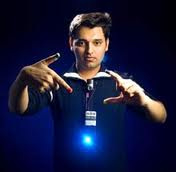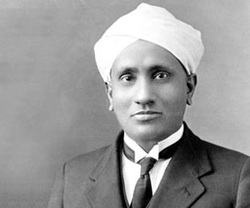
Custom Search
Some Stars Of India...
Pranav Mistry

PRANAV MISTRY is an INDIAn behind the biscovery of sixth sence technology.
'SixthSense' is a wearable gestural interface that augments the physical world around us with digital information and lets us use natural hand gestures to interact with that information.
We've evolved over millions of years to sense the world around us. When we encounter something, someone or some place, we use our five natural senses to perceive information about it; that information helps us make decisions and chose the right actions to take. But arguably the most useful information that can help us make the right decision is not naturally perceivable with our five senses, namely the data, information and knowledge that mankind has accumulated about everything and which is increasingly all available online. Although the miniaturization of computing devices allows us to carry computers in our pockets, keeping us continually connected to the digital world, there is no link between our digital devices and our interactions with the physical world. Information is confined traditionally on paper or digitally on a screen. SixthSense bridges this gap, bringing intangible, digital information out into the tangible world, and allowing us to interact with this information via natural hand gestures. ‘SixthSense’ frees information from its confines by seamlessly integrating it with reality, and thus making the entire world your computer.
The SixthSense prototype is comprised of a pocket projector, a mirror and a camera. The hardware components are coupled in a pendant like mobile wearable device. Both the projector and the camera are connected to the mobile computing device in the user’s pocket. The projector projects visual information enabling surfaces, walls and physical objects around us to be used as interfaces; while the camera recognizes and tracks user's hand gestures and physical objects using computer-vision based techniques. The software program processes the video stream data captured by the camera and tracks the locations of the colored markers (visual tracking fiducials) at the tip of the user’s fingers using simple computer-vision techniques. The movements and arrangements of these fiducials are interpreted into gestures that act as interaction instructions for the projected application interfaces. The maximum number of tracked fingers is only constrained by the number of unique fiducials, thus SixthSense also supports multi-touch and multi-user interaction.
The SixthSense prototype implements several applications that demonstrate the usefulness, viability and flexibility of the system. The map application lets the user navigate a map displayed on a nearby surface using hand gestures, similar to gestures supported by Multi-Touch based systems, letting the user zoom in, zoom out or pan using intuitive hand movements. The drawing application lets the user draw on any surface by tracking the fingertip movements of the user’s index finger. SixthSense also recognizes user’s freehand gestures (postures). For example, the SixthSense system implements a gestural camera that takes photos of the scene the user is looking at by detecting the ‘framing’ gesture. The user can stop by any surface or wall and flick through the photos he/she has taken. SixthSense also lets the user draw icons or symbols in the air using the movement of the index finger and recognizes those symbols as interaction instructions. For example, drawing a magnifying glass symbol takes the user to the map application or drawing an ‘@’ symbol lets the user check his mail. The SixthSense system also augments physical objects the user is interacting with by projecting more information about these objects projected on them. For example, a newspaper can show live video news or dynamic information can be provided on a regular piece of paper. The gesture of drawing a circle on the user’s wrist projects an analog watch.
We've evolved over millions of years to sense the world around us. When we encounter something, someone or some place, we use our five natural senses to perceive information about it; that information helps us make decisions and chose the right actions to take. But arguably the most useful information that can help us make the right decision is not naturally perceivable with our five senses, namely the data, information and knowledge that mankind has accumulated about everything and which is increasingly all available online. Although the miniaturization of computing devices allows us to carry computers in our pockets, keeping us continually connected to the digital world, there is no link between our digital devices and our interactions with the physical world. Information is confined traditionally on paper or digitally on a screen. SixthSense bridges this gap, bringing intangible, digital information out into the tangible world, and allowing us to interact with this information via natural hand gestures. ‘SixthSense’ frees information from its confines by seamlessly integrating it with reality, and thus making the entire world your computer.
The SixthSense prototype is comprised of a pocket projector, a mirror and a camera. The hardware components are coupled in a pendant like mobile wearable device. Both the projector and the camera are connected to the mobile computing device in the user’s pocket. The projector projects visual information enabling surfaces, walls and physical objects around us to be used as interfaces; while the camera recognizes and tracks user's hand gestures and physical objects using computer-vision based techniques. The software program processes the video stream data captured by the camera and tracks the locations of the colored markers (visual tracking fiducials) at the tip of the user’s fingers using simple computer-vision techniques. The movements and arrangements of these fiducials are interpreted into gestures that act as interaction instructions for the projected application interfaces. The maximum number of tracked fingers is only constrained by the number of unique fiducials, thus SixthSense also supports multi-touch and multi-user interaction.
The SixthSense prototype implements several applications that demonstrate the usefulness, viability and flexibility of the system. The map application lets the user navigate a map displayed on a nearby surface using hand gestures, similar to gestures supported by Multi-Touch based systems, letting the user zoom in, zoom out or pan using intuitive hand movements. The drawing application lets the user draw on any surface by tracking the fingertip movements of the user’s index finger. SixthSense also recognizes user’s freehand gestures (postures). For example, the SixthSense system implements a gestural camera that takes photos of the scene the user is looking at by detecting the ‘framing’ gesture. The user can stop by any surface or wall and flick through the photos he/she has taken. SixthSense also lets the user draw icons or symbols in the air using the movement of the index finger and recognizes those symbols as interaction instructions. For example, drawing a magnifying glass symbol takes the user to the map application or drawing an ‘@’ symbol lets the user check his mail. The SixthSense system also augments physical objects the user is interacting with by projecting more information about these objects projected on them. For example, a newspaper can show live video news or dynamic information can be provided on a regular piece of paper. The gesture of drawing a circle on the user’s wrist projects an analog watch.
C.V.RAMAN

Born: November 7, 1888
Died: November 21, 1970
Achievements: He was the first Indian scholar who studied wholly in India received the Nobel Prize.
C.V. Raman is one of the most renowned scientists produced by India. His full name was Chandrasekhara Venkata Raman. For his pioneering work on scattering of light, C.V. Raman won the Nobel Prize for Physics in 1930.
Chandrashekhara Venkata Raman was born on November 7, 1888 in Tiruchinapalli, Tamil Nadu. He was the second child of Chandrasekhar Iyer and Parvathi Amma. His father was a lecturer in mathematics and physics, so he had an academic atmosphere at home. He entered Presidency College, Madras, in 1902, and in 1904 passed his B.A. examination, winning the first place and the gold medal in physics. In 1907, C.V. Raman passed his M.A. obtaining the highest distinctions.
During those times there were not many opportunities for scientists in India. Therefore, Raman joined the Indian Finance Department in 1907. After his office hours, he carried out his experimental research in the laboratory of the Indian Association for the Cultivation of Science at Calcutta. He carried out research in acoustics and optics.
In 1917, Raman was offered the position of Sir Taraknath Palit Professorship of Physics at Calcutta University. He stayed there for the next fifteen years. During his tenure there, he received world wide recognition for his work in optics and scattering of light. He was elected to the Royal Society of London in 1924 and the British made him a knight of the British Empire in 1929. In 1930, Sir C.V. Raman was awarded with Nobel Prize in Physics for his work on scattering of light. The discovery was later christened as "Raman Effect".
In 1934, C.V. Raman became the director of the newly established Indian Institute of Sciences in Bangalore, where two years later he continued as a professor of physics. Other investigations carried out by Raman were: his experimental and theoretical studies on the diffraction of light by acoustic waves of ultrasonic and hypersonic frequencies (published 1934-1942), and those on the effects produced by X-rays on infrared vibrations in crystals exposed to ordinary light. In 1947, he was appointed as the first National Professor by the new government of Independent India. He retired from the Indian Institute in 1948 and a year later he established the Raman Research Institute in Bangalore, where he worked till his death.
Sir C.V. Raman died on November 21, 1970.
Died: November 21, 1970
Achievements: He was the first Indian scholar who studied wholly in India received the Nobel Prize.
C.V. Raman is one of the most renowned scientists produced by India. His full name was Chandrasekhara Venkata Raman. For his pioneering work on scattering of light, C.V. Raman won the Nobel Prize for Physics in 1930.
Chandrashekhara Venkata Raman was born on November 7, 1888 in Tiruchinapalli, Tamil Nadu. He was the second child of Chandrasekhar Iyer and Parvathi Amma. His father was a lecturer in mathematics and physics, so he had an academic atmosphere at home. He entered Presidency College, Madras, in 1902, and in 1904 passed his B.A. examination, winning the first place and the gold medal in physics. In 1907, C.V. Raman passed his M.A. obtaining the highest distinctions.
During those times there were not many opportunities for scientists in India. Therefore, Raman joined the Indian Finance Department in 1907. After his office hours, he carried out his experimental research in the laboratory of the Indian Association for the Cultivation of Science at Calcutta. He carried out research in acoustics and optics.
In 1917, Raman was offered the position of Sir Taraknath Palit Professorship of Physics at Calcutta University. He stayed there for the next fifteen years. During his tenure there, he received world wide recognition for his work in optics and scattering of light. He was elected to the Royal Society of London in 1924 and the British made him a knight of the British Empire in 1929. In 1930, Sir C.V. Raman was awarded with Nobel Prize in Physics for his work on scattering of light. The discovery was later christened as "Raman Effect".
In 1934, C.V. Raman became the director of the newly established Indian Institute of Sciences in Bangalore, where two years later he continued as a professor of physics. Other investigations carried out by Raman were: his experimental and theoretical studies on the diffraction of light by acoustic waves of ultrasonic and hypersonic frequencies (published 1934-1942), and those on the effects produced by X-rays on infrared vibrations in crystals exposed to ordinary light. In 1947, he was appointed as the first National Professor by the new government of Independent India. He retired from the Indian Institute in 1948 and a year later he established the Raman Research Institute in Bangalore, where he worked till his death.
Sir C.V. Raman died on November 21, 1970.

